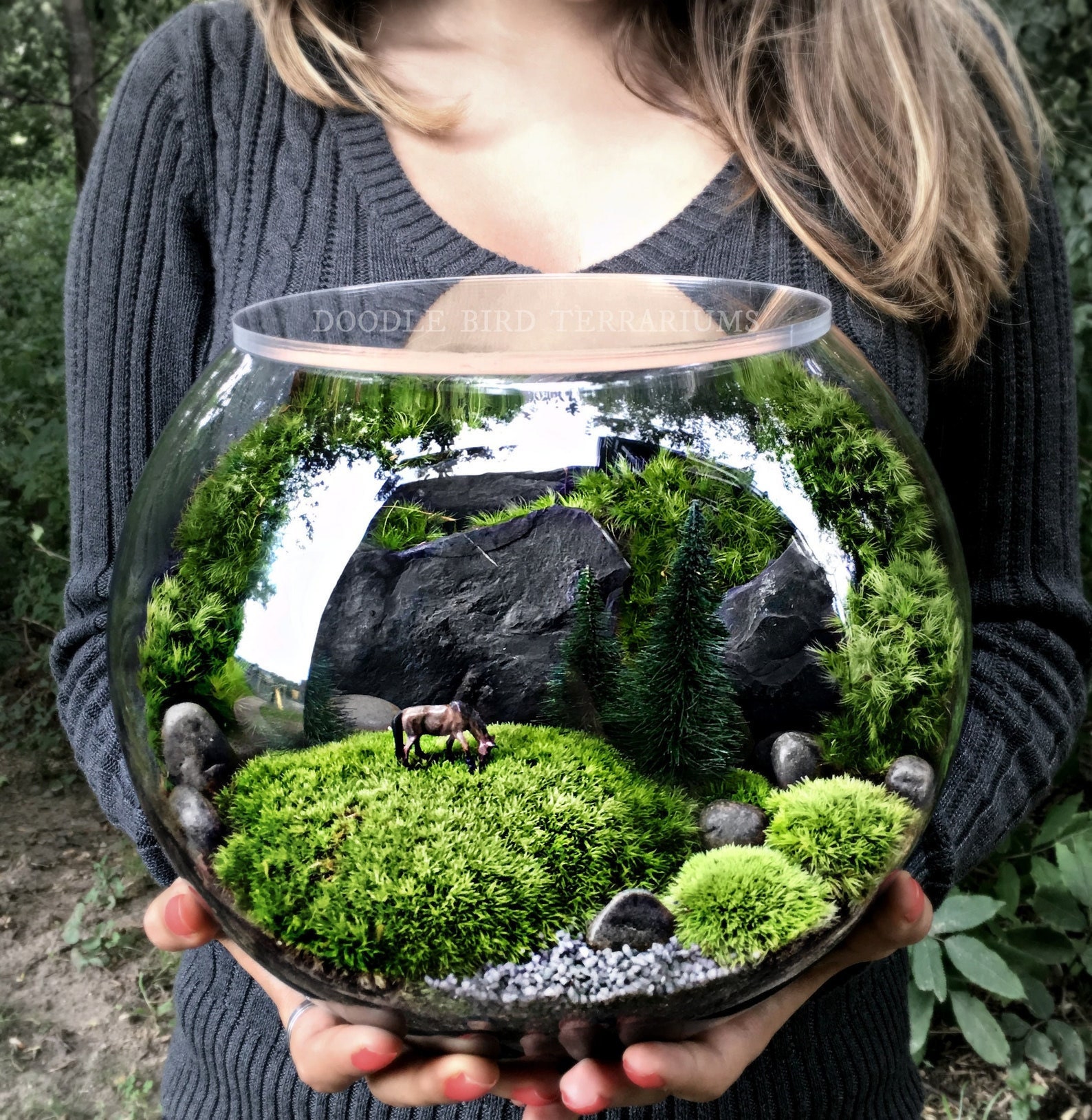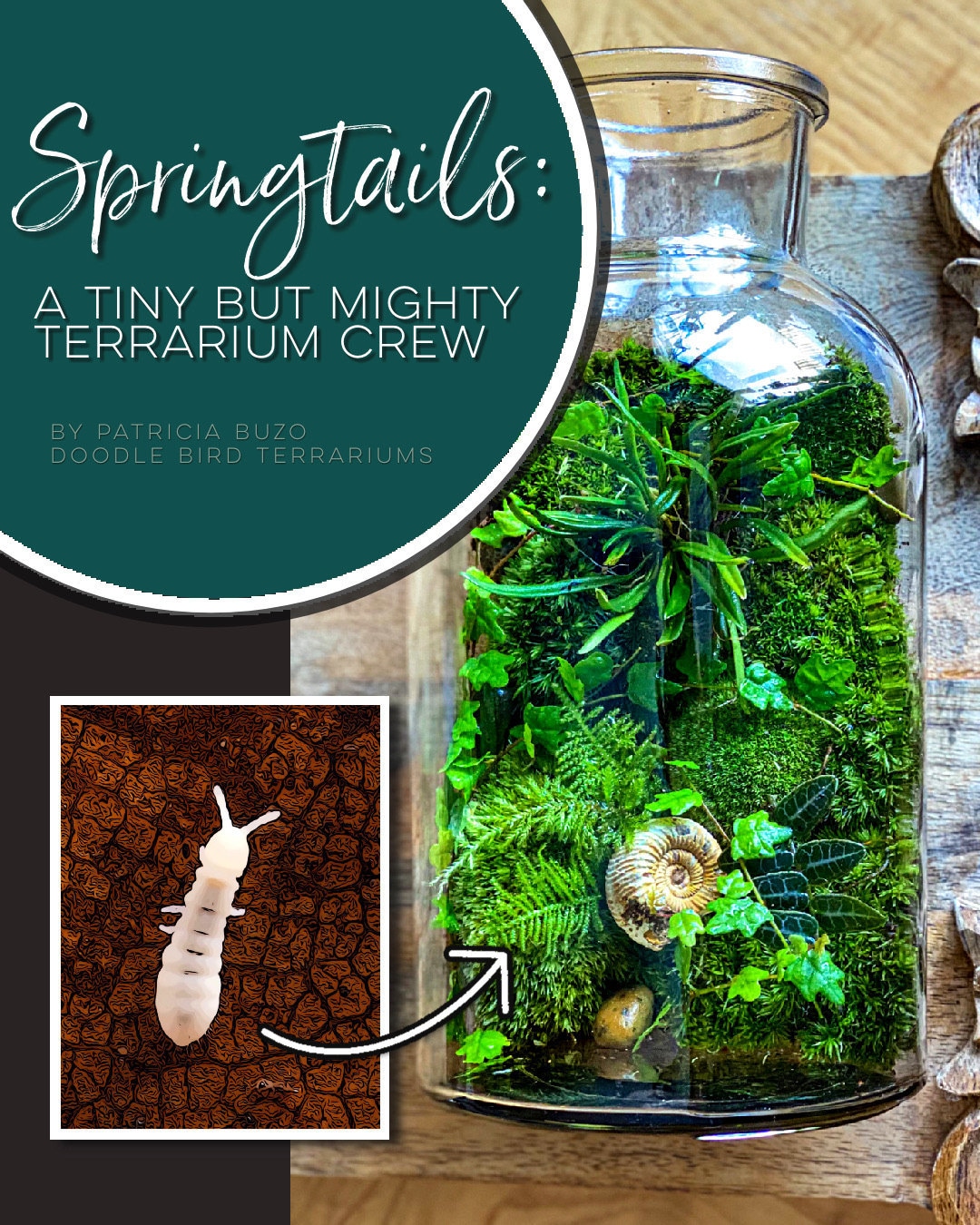If you were to ask me what my secret is to a healthy and thriving terrarium, whether it houses moss or tropical plants, I would summarize it in one word: bioactive.
What is a bioactive terrarium?
A bioactive terrarium is a self sustaining mini replica of a naturally occurring ecosystem such as a woodland forest. It is made up of plants and animals, as well as fungi & tiny microorganisms that help break down waste and decay, recycle nutrients, fertilize and enrich the soil. One of these tiny living organisms is the springtail.
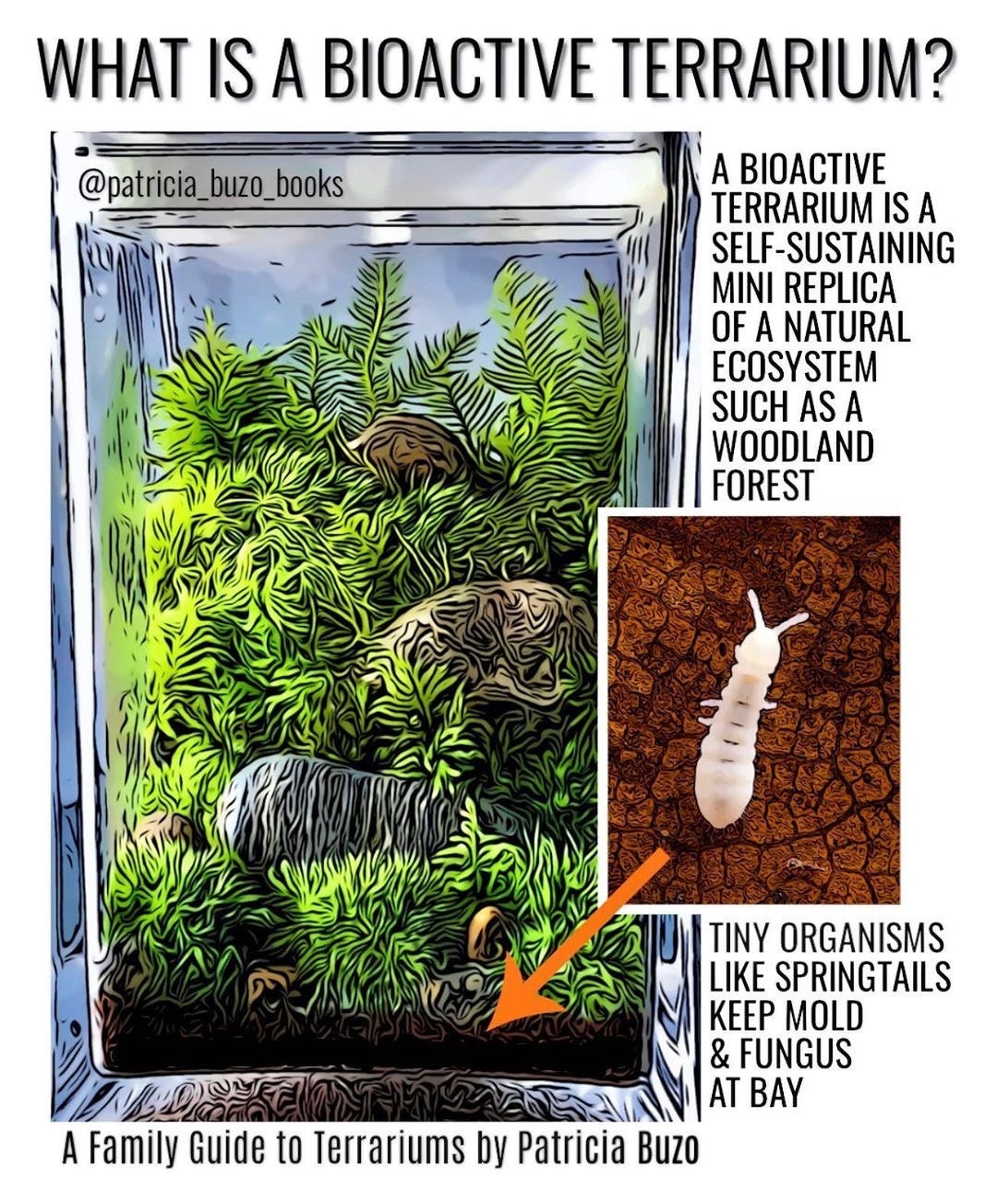
What is a springtail?
So what exactly is a springtail and why should you care? Springtails are minute insects that are everywhere. They are in your garden, in your houseplants, in the woods, and in the city. Basically they live anywhere soil and plants are present. They can be found in virtually any climate, even where temperatures drop below freezing, which is why they are sometimes called "snow fleas" (they are not related to real fleas, nor do they bite). But as widely distributed as they are I bet you've never even noticed them. Springtails keep to themselves, yet tirelessly work hard to keep our ecosystem healthy and happy. How?
Springtails generally live in the topsoil and leaf litter where they recycle dead plant material, fungus, and mold into nutrients that plants can use as fertilizer. But fertilizing plants, although admirable and beneficial, is not what make them so prized in terrariums.
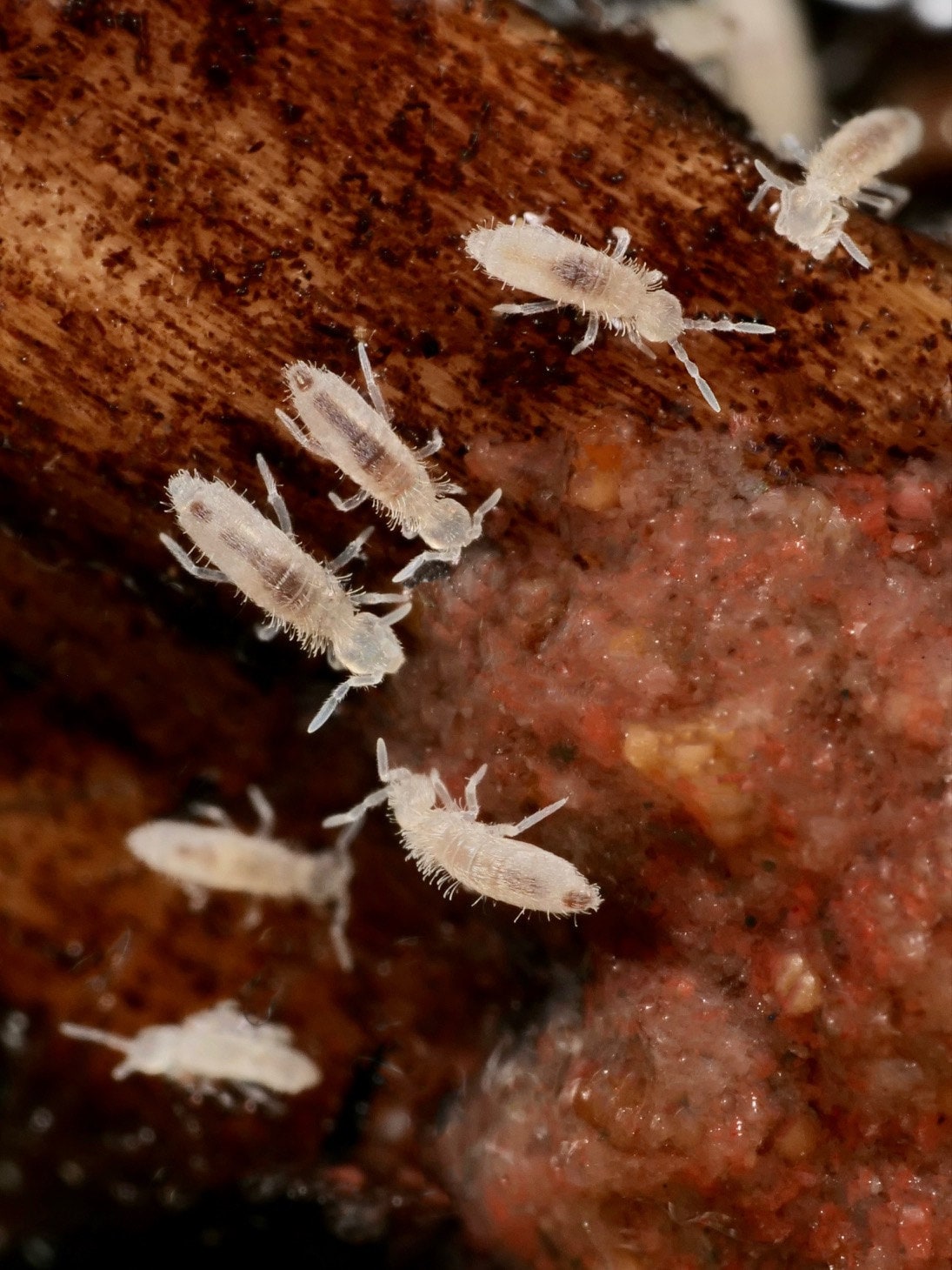
A tiny yet mighty terrarium clean up crew
So just why do you want them in your terrarium? Well the answer is simple: mold. Mold is the number one killer of many terrarium plants, including moss. Before I discovered what springtails could do I struggled to keep a healthy terrarium going long term. Plants that had been thriving and healthy one day, would be covered in white fuzzy mold the next. In as little as a few days time, everything would be a withered smelly mess. One method I experimented with was cracking the lid open or even removing it entirely for a short period of time to let air in, but doing so disrupted the water cycle so much that plants (and especially moss) would dry out and suffer. I should comment here that I still recommend cracking the lid open slightly to allow for airflow from time to time, but that is not a cure for a serious mold problem.
So after doing some research, I discovered that vivarium builders had been using tropical springtails for years as a clean up crew in their pet's homes. I figured it couldn't hurt to try, so I ordered some online. I had one particular terrarium at the time that was covered in mold, so when the package arrived I added about 10 tiny individuals to the container and waited. Well I didn't need to wait long! By the next evening half of the mold was gone, I couldn't believe it! And by the end of the week all traces of mold had disappeared. These tiny millimeter long insects had saved my terrarium from the trash.
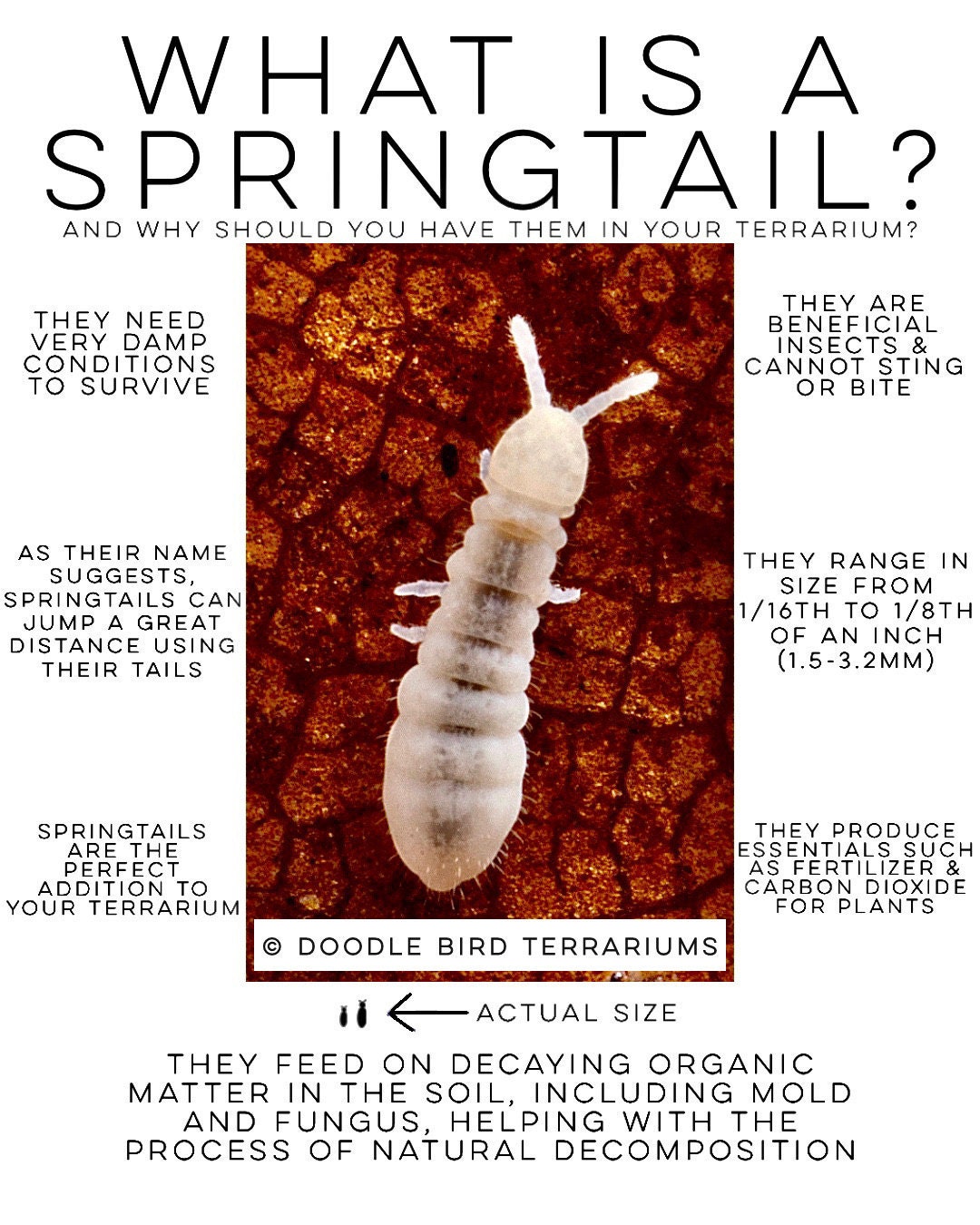
This discovery led me to experiment further with springtails, adding them to all types of terrariums: moss, tropical, even carnivorous planted terrariums and into the pots of some of my houseplants. I found that they really are a mighty army you need working for you to attain long term terrarium success!
All of the terrariums I offer for sale in my shop automatically come with a healthy number of individuals, and chances are you won't even notice they are present. But you will be able to enjoy the fruits of their labor for many years to come!
